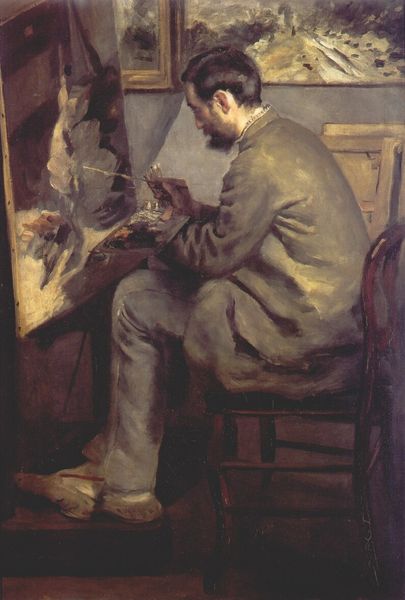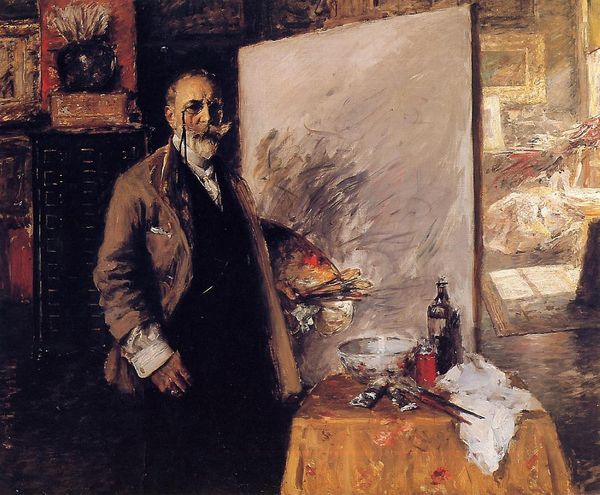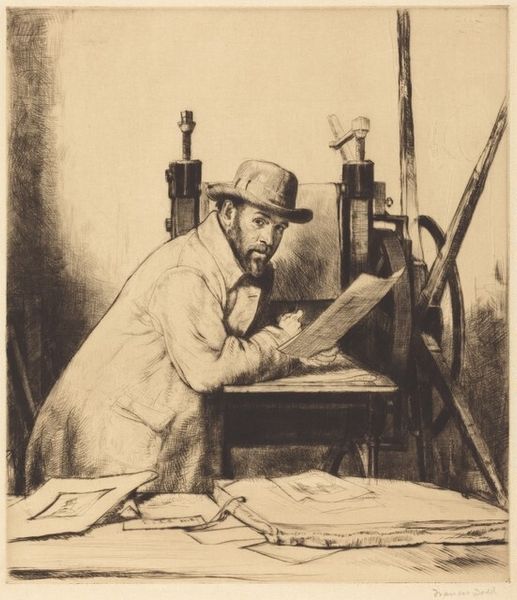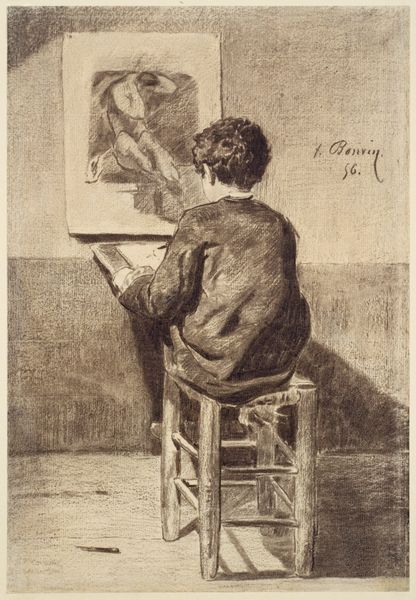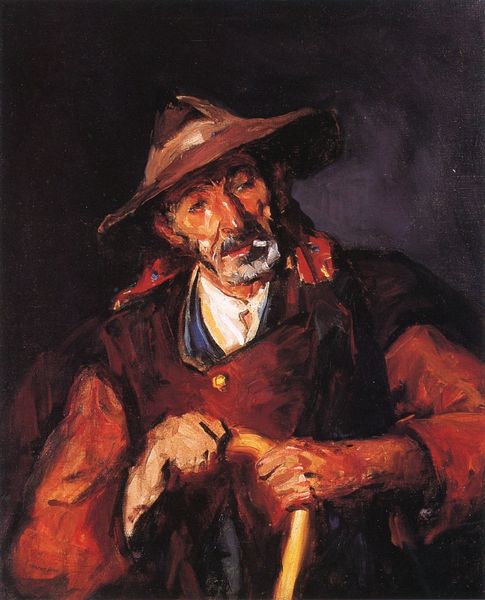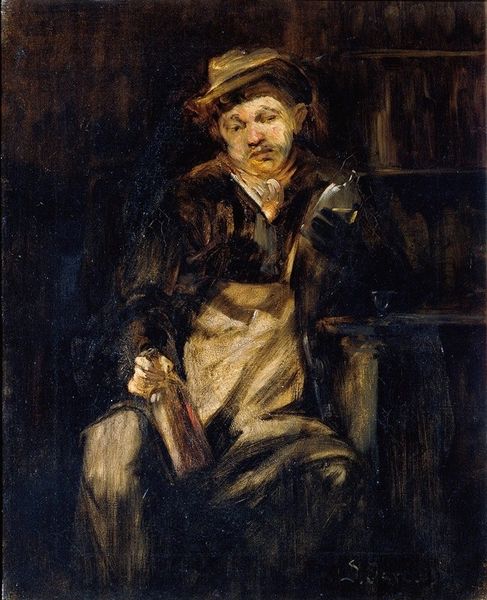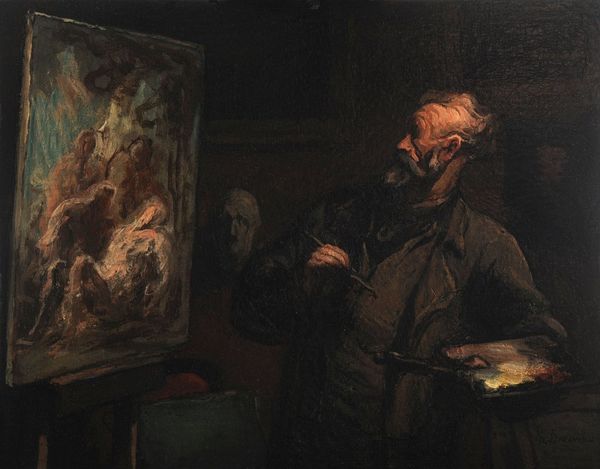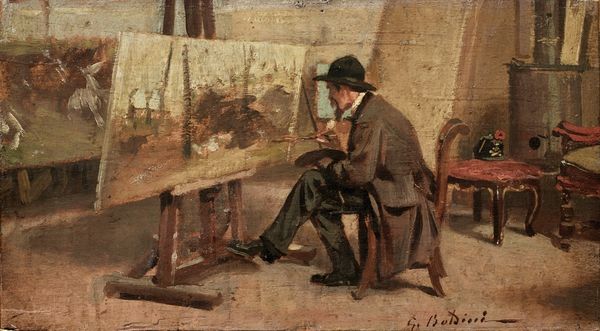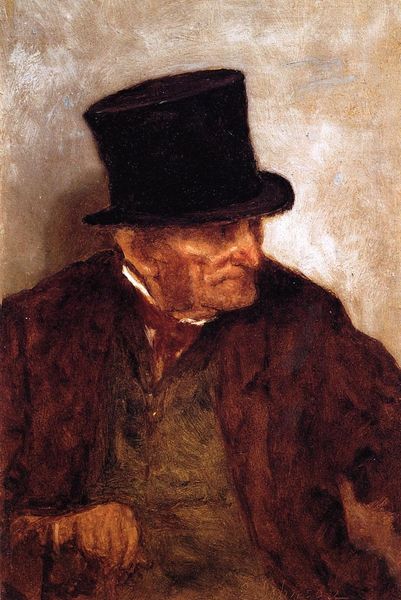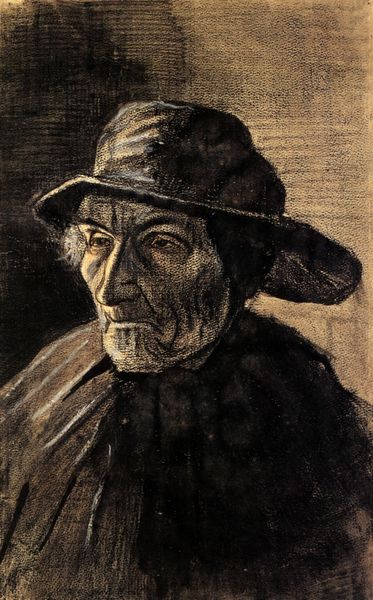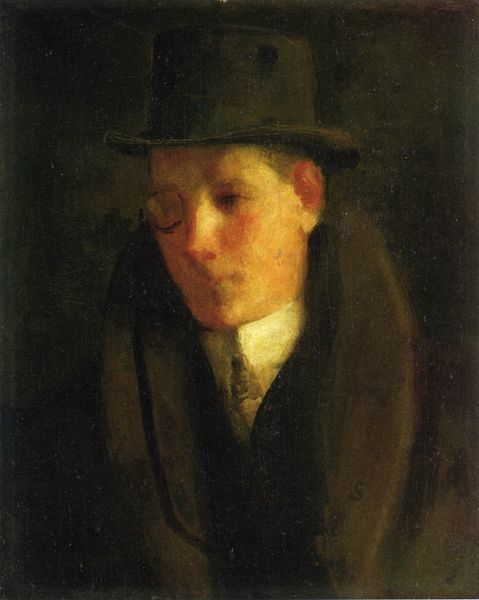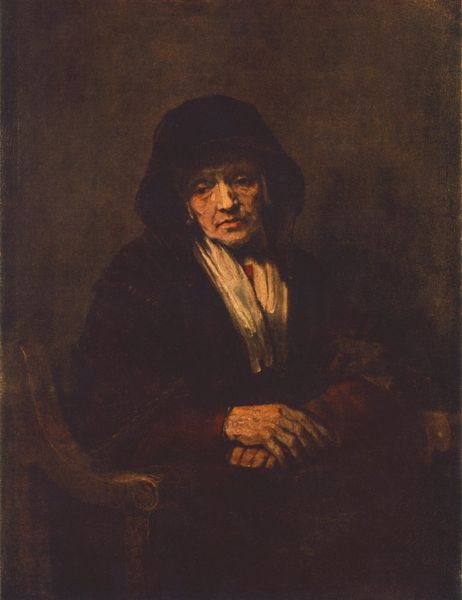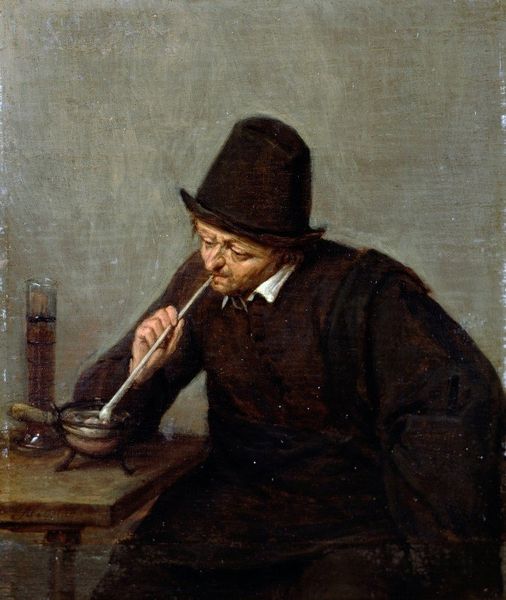
oil-paint, impasto
#
portrait
#
self-portrait
#
oil-paint
#
oil painting
#
impasto
#
famous-people
#
male-portraits
#
portrait head and shoulder
#
underpainting
#
post-impressionism
#
portrait art
#
modernism
#
fine art portrait
#
realism
Copyright: Public domain
Curator: Here we have Vincent van Gogh’s “Self-Portrait with Dark Felt Hat at the Easel,” painted in 1886. It’s currently held at the Van Gogh Museum in Amsterdam. Editor: My first thought is, what a powerfully introspective gaze. It feels immediate, like we're catching him in a private moment. The browns and greens create a somewhat somber mood. Curator: It’s fascinating to consider Van Gogh’s intense focus on self-representation at this point in his career. This was during his time in Paris, a period where he was heavily influenced by Impressionism, although we already see his distinct impasto technique developing. Look at the thickness of the paint, applied so vigorously. Editor: That dark felt hat, positioned slightly aslant... hats often symbolize status, or perhaps a covering, a shielding. It draws attention right to his face, which, despite the somewhat drab palette, emanates such an emotional intensity. It’s interesting that the easel becomes almost as prominent as the artist himself. Curator: Yes, the easel becomes a structural component and is almost a proxy for the artistic labor itself. Consider the material reality: canvas stretched taut, the mixing of paints. It is not merely an allegorical element, but an essential tool. Editor: But the palette and easel aren't just tools, they are also a declaration of his identity. The red, white and green daubs are also emblems representing life and work itself. This symbol reinforces the self-portrait aspect to explore the persona of an artist. The eyes, slightly unfocused, create the sense of the inner self that exists just beyond our reach. Curator: And while we delve into symbolism, let's not overlook the social conditions that fostered this kind of artistic exploration. He was painting in a world of evolving markets, increasing consumerism for art supplies... even that hat indicates a burgeoning middle class. Editor: I see your point, connecting it all to economic forces, however, I think in terms of emotional legacy here. Curator: A potent reminder that even the most iconic self-portraits are rooted in a network of production, materials, and socioeconomic conditions. Editor: And how artistic symbols often echo across time and cultural spaces. What an intriguing and revealing look at the artist at work.
Comments
No comments
Be the first to comment and join the conversation on the ultimate creative platform.
